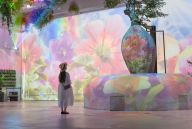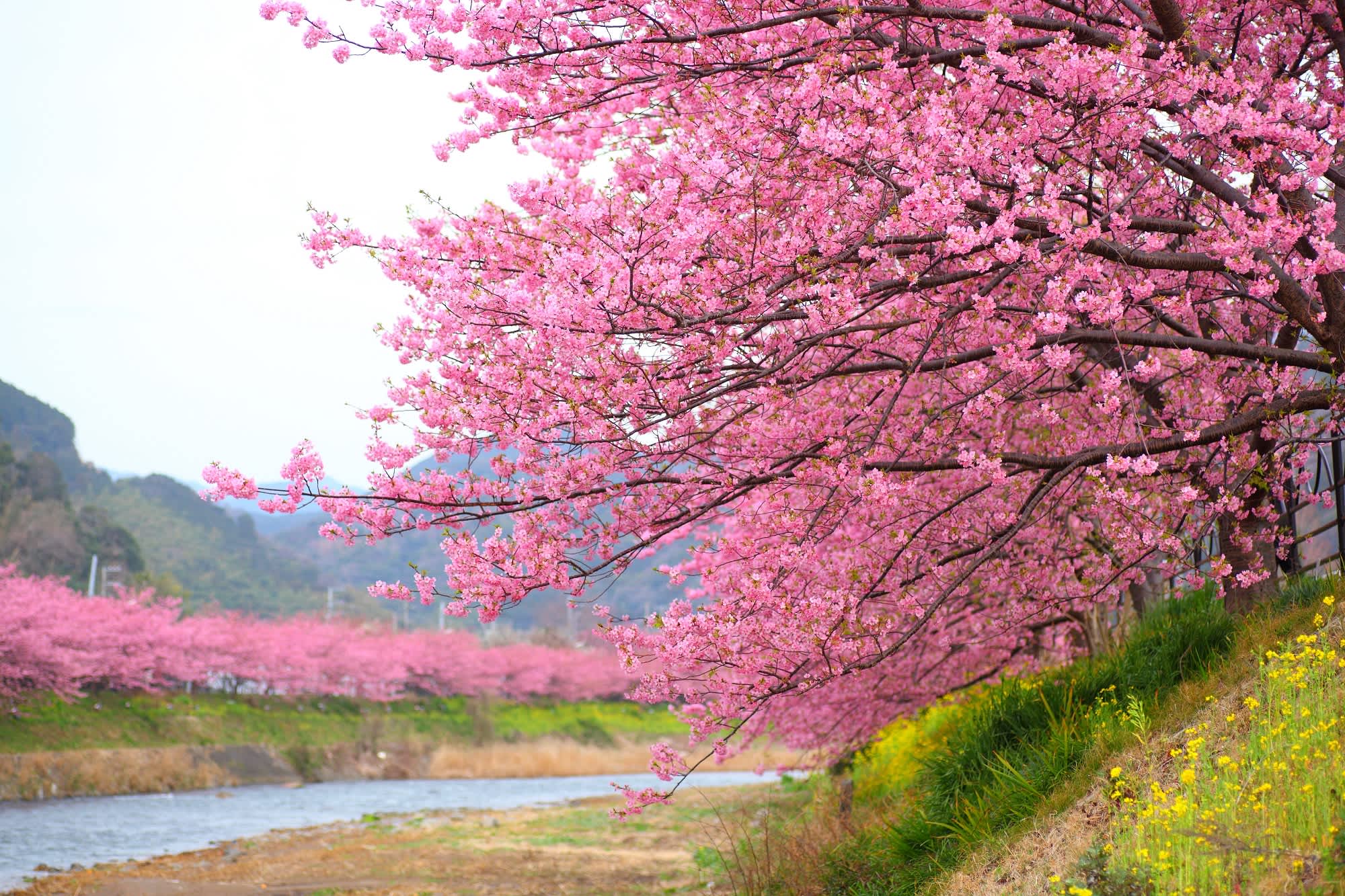
Enjoy Early Spring in Japan with Shizuoka’s Flower and Doll Festivals
If you’re traveling around Japan early in the year and want to experience local springtime traditions like hanami or flower viewing, head over to Shizuoka. Located on the southern coast, the prefecture hosts a number of Japanese spring festivals, including one of the earliest cherry blossom festivals in the country.
Ahead, we introduce the spring festivals in Shizuoka, Japan, that you can experience even as you travel around February and March. Held in the prefecture’s Atami and Izu areas, these events are easily accessible and near other must-see destinations. Read on to get some tips when exploring the region!
(1)Kawazu-zakura Festival (Kawazu, Kamo)
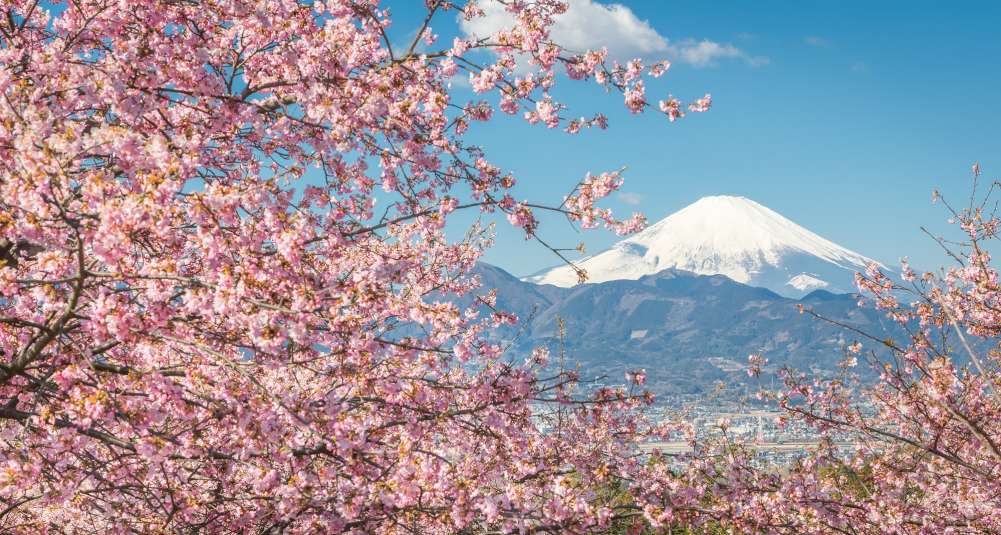
When does cherry blossom season start in Japan? While the blooming season for spring flowers is usually between the end of March and April every year, some flowers in other regions start blooming as early as February.
Thousands of local and international tourists flock to parks around the country to see the famous Somei Yoshino cherry blossoms as well as other sakura variants bloom during this time. However, in the Izu area of the Shizuoka Prefecture, it’s the early-blooming cherry blossom called Kawazu-zakura that gets the spotlight.
Known for its huge petals and bright pink color, the variant begins to bloom in early February each year and remains open for about a month, allowing everyone to appreciate its breathtaking beauty for a longer while.
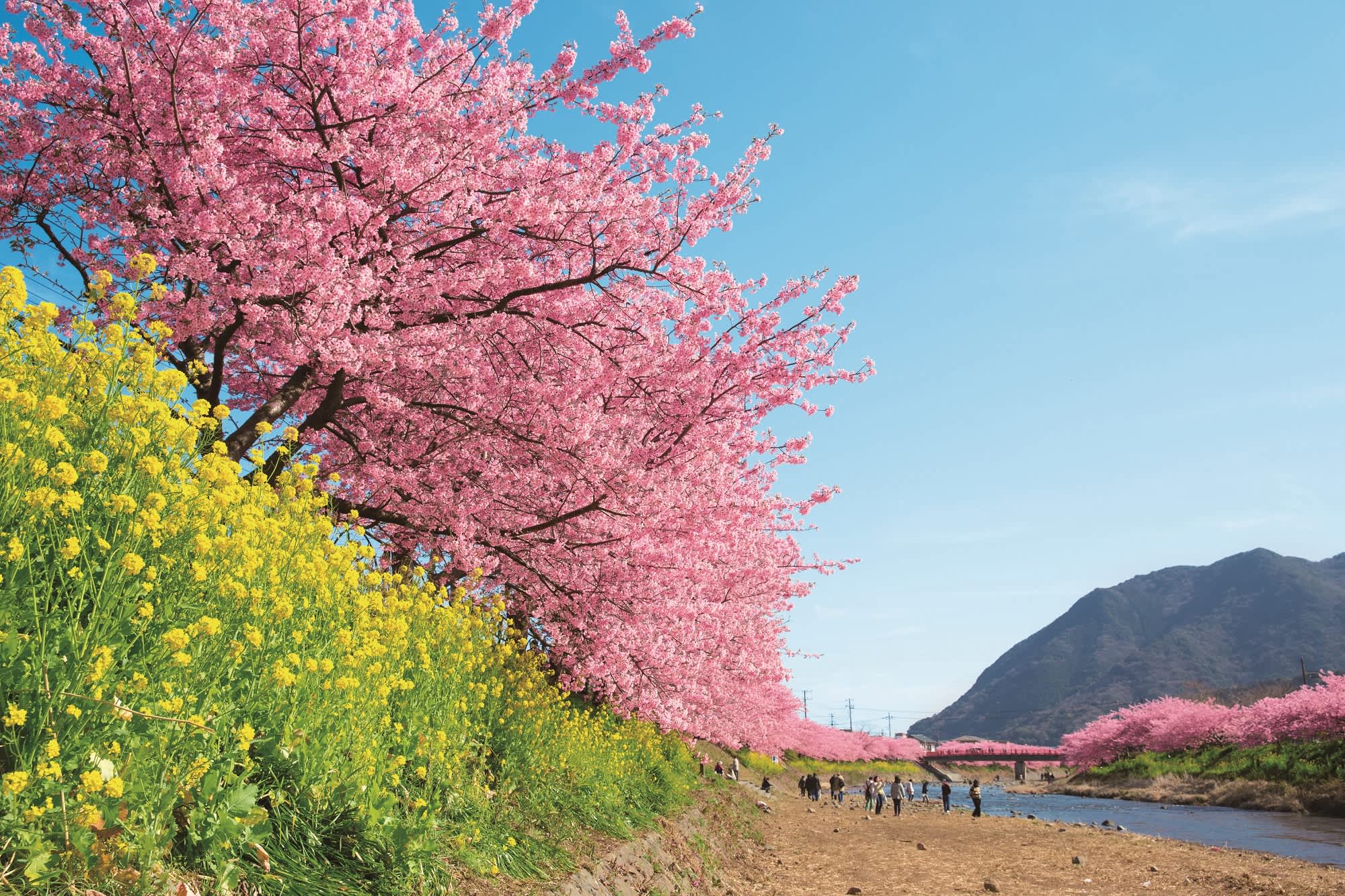
The flowering of this cherry blossom variant is celebrated at the Kawazu-zakura Festival. One of the earliest annual Shizuoka sakura festivals, the event welcomes tourists to see the blooming of the 850 Kawazu cherry trees lining the 4-kilometer-long Kawaberi Nanohana Road by the river.
When you stroll along this path, remember to take plenty of photos! The pink and yellow floras and the blue river make for a wonderful, colorful view. Lots of food stalls are also open during the festival, so you can enjoy delectable local delicacies in your walk.

Aside from flower-viewing and eating, you can enjoy the free foot bath along the river, which is perfect if you want a short break after strolling along the tree-lined road. Savor this treat while taking in the view for a most relaxing experience.
If you end up arriving later during the day, don’t fret, as you can still enjoy the sakura trees at night. When the sun sets, the Kawazu-zakura are illuminated, giving you a magnificent flowery scene like no other! The glowing trees create a more romantic atmosphere that is slightly different from during the day, making you feel like you’re in a scene from a movie.
Event Information
| Name: Kawazu-zakura Festival Location: Sasahara, Kawazu-cho, Kamo-gun, Shizuoka Event Period: Early February - March ※Event dates are subject to change. Please visit the official website for announcements. Access: Take the Limited Express Odoriko from Tokyo Station for about 2 hours and 30 minutes and get off at Kawazu Station. Website: Kawazu Tourist Association (English) |
(2)Hina no Tsurushi Ornament Festival(Kamo district)
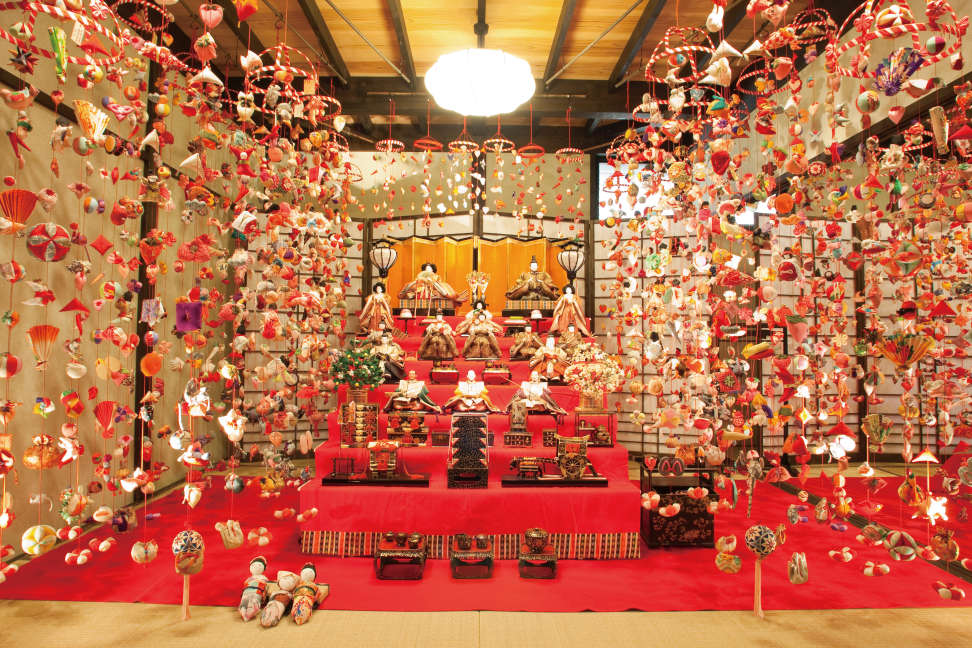
Every March 3 in Japan is Hinamatsuri or Girls’ Day. In this long-observed religious holiday, people pray for the healthy growth of young girls. Hina dolls (said to carry the misfortune and illness for little girls) and peach blossoms are also displayed, and different sorts of Japanese confectionery made from glutinous rice like hina-arare and Hishi mochi are served, along with chirashi sushi made with seafood and vegetables.
To further pray for the growth of each household’s daughters, families hang Hina no Tsurushi, an ornament that originates from Inatori Onsen on the Izu Peninsula. This particular practice is said to have started during the Edo period (1603-1868) when only a few wealthy families could afford to buy Hina dolls. Because of that, it has also become a practice for mothers and grandmothers of ordinary families to decorate their homes with these handmade hanging decorations to celebrate the festival.
If you head over to the Inatori Onsen during Girls’ Day, you can join in their celebration of the Hina no Tsurushi Ornament Festival. During the event, visit the Susanoo Shrine, which is said to be the best shrine in Japan for celebrating Hinamatsuri, with Hina dolls displayed on 118 steps.
At each festival venue, you’ll find numerous cute hanging decorations made of colorful materials, one of which is the Hina no Yakata Mukaian, which stands facing the sea and overlooks the Izu Seven Islands. There are other spots worth taking snaps of, such as one that features precious Hina dolls that have been handed down through generations.
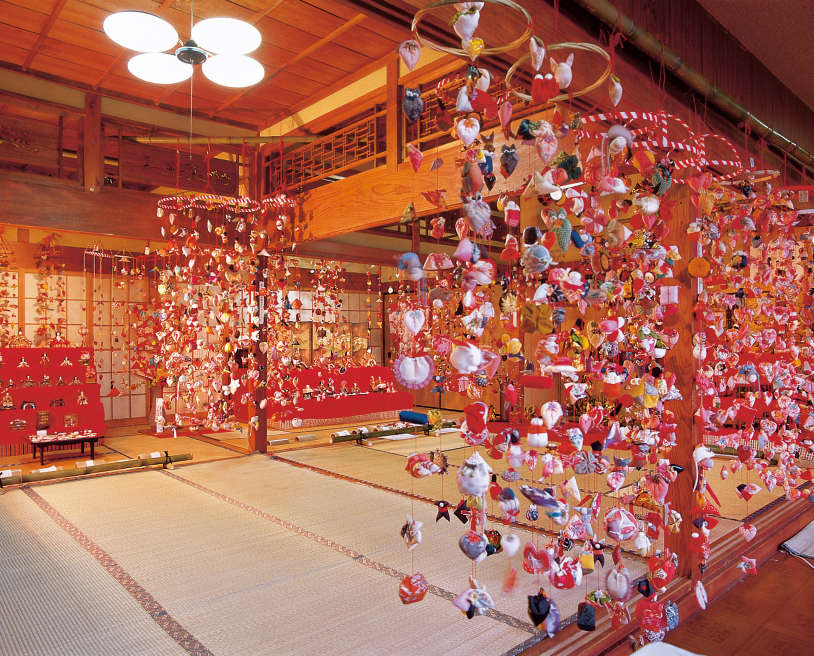
Shizuoka is famous for producing tea, so while you’re there, we recommend experiencing its refined Japanese tea culture. You can check out Hina no Chakai and enjoy authentic Japanese matcha with confectionery with limited availability.
At Amakusakan, spend the day shopping for local products and souvenirs, taking light meals, and stocking up on confectionery. There are also hot springs and the beach to make your festival experience more memorable.
Inatori offers a lot of interesting experiences—from souvenir shopping and food to hot springs! Roaming around the area will definitely make you forget about the passage of time. The charming views will invite you to just keep on pressing your camera shutter button all day long. Some venues offer tours too, so if you want to learn more about the local customs, be sure to check them out.
Event Information
| Name: Hina no Tsurushi Ornament Festival Location: Inatori, Higashiizu-cho, Kamo-gun, Shizuoka Event Period: January 20 - March 31 ※Event dates are subject to change. Please visit the official website for announcements. Access: Take the Limited Express Odoriko from Tokyo Station for about 2 hours and 30 minutes, get off at Izu Inatori Station, and head for the main venue, Inatori Cultural Park Hina, which is about 15 minutes on foot. Website: East Izu Town Spa (Japanese) |
(3)Atami Plum Garden Plum Festival(Atami City)

Atami Plum Garden boasts 469 plum trees of 60 types, including ones that are over 100 years old. The place is known for having plum blossoms that bloom the earliest in Japan, from late November to early December annually. With a wide variety of plums (and their mid-to-late blooming periods), expect to catch them blossoming when you visit.

This means you can still join locals in appreciating the beauty of plum blossoms blooming when you’re in town for the Plum Festival from January to March. Indeed, the sight of rosy hues, from light and subtle to deep and rich is not to be missed.
Event Information
| Name: Atami Plum Garden Plum Festival Location: 8-11, Baien-Cho, Atami City, Shizuoka Event Period: January 8 - March 6 ※Event dates are subject to change. Please visit the official website for announcements. Operating hours: 8:30 a.m. - 4 p.m. Admission fee (charged only during the festival hours): General admission: ¥300 Groups of 11 or more: ¥200 Atami city hotel guests: ¥100 ※Please show proof of accommodation (reservation papers, receipt, etc.). Prices are subject to change. Access: From JR Atami Station, take the bus bound for Ainohara Housing Complex and get off at the Umezono Bus Stop after about 15 minutes. Website: Atami City Tourism Association (English) |
Traveling solo around Atami and Izu
The three festival venues mentioned are quite easy to access from the nearest stations, so you can easily go sightseeing on foot afterward without having to take a taxi.
Aside from joining these Japanese spring festivals and experiencing local traditions, you can enjoy a whole lot more when you visit Shizuoka’s Atami and Izu areas. These two are known as hot spring resort towns, so you can also stay awhile in their ryokan (traditional Japanese inn) and have a rejuvenating dip in their baths.
As they are famous tourist destinations, there are lots of restaurants that you can enter casually even if you go alone. Right in front of Atami Station you’ll find a number of establishments that offer plenty of local dishes, so feel free to eat and compare various kinds of Japanese confectionery while satisfying your hunger!
Read more: From invigorating onsen to breathtaking ocean views — everything you need to know about Shizuoka.
Refer to the following for more information on the facilities mentioned in this article.
About Seasonal Flowers in Japan
https://www.japan.travel/en/my/fascinating-suburb-japan/not-just-sakurasee-flowers-japan/
Shizuoka
https://www.japan.travel/en/destinations/tokai/shizuoka/
http://shizuoka-guide.com/english/index.html
Kawazu-zakura Festival
https://www.japan.travel/en/spot/1279/
http://www.kawazu-onsen.com/eng/
Hina no Tsurushi Ornament Festival
https://www.japan.travel/en/spot/1281/
Atami Plum Garden Plum Festival
https://travel.ataminews.gr.jp/en/
Your Bucket List:
Experience the best of Japanese springtime
Not Just Sakura! See the Flowers of Japan
—















































